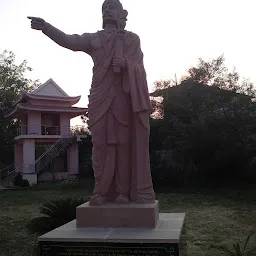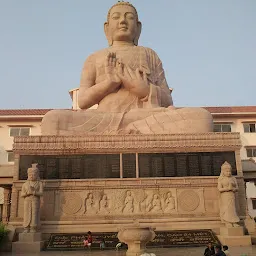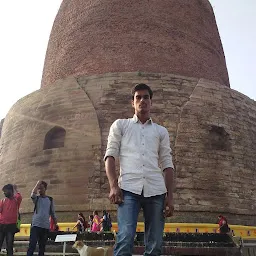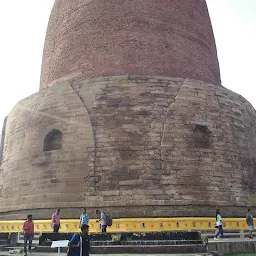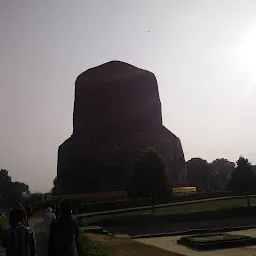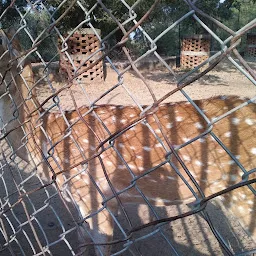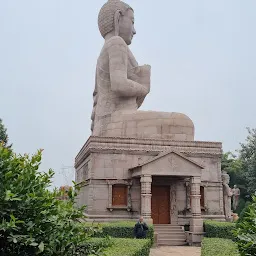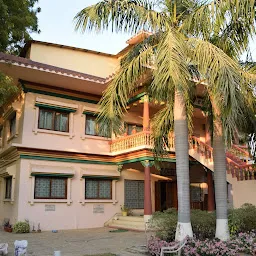Gulabi Mandir
92PM+F7W, Unnamed Road,, Sarnath, Varanasi, Uttar Pradesh 221007, IndiaGulabi Mandir is a buddhist temple located in Varanasi, Uttar Pradesh. The average rating of this place is 4.20 out of 5 stars based on 21 reviews. The street address of this place is 92PM+F7W, Unnamed Road,, Sarnath, Varanasi, Uttar Pradesh 221007, India. It is about 0.98 kilometers away from the Sarnath railway station.
- Where is Gulabi Mandir located?
- Gulabi Mandir is located at 92PM+F7W, Unnamed Road,, Sarnath, Varanasi, Uttar Pradesh 221007, India.
- What is the nearest railway station from Gulabi Mandir?
- Sarnath railway station is the nearest railway station to Gulabi Mandir. It is nearly 0.98 kilometers away from it.
DEV SINGH 47 months ago
Singhpur, a village approximately one kilometre away from the site, was the birthplace of Shreyansanath, the Eleventh Tirthankara of Jainism. A temple dedicated to him, is an important pilgrimage site.
Also referred to as Isipatana, this city is mentioned by the Buddha as one of the four places of pilgrimage to which his devout followers should visit.[1] It was also the site of the Buddha's Dhammacakkappavattana Sutta, which was his first teaching after attaining enlightenment, in which he taught the four noble truths and the teachings associated with it.
Sarnath has been variously known as Mrigadava, Migadāya, Rishipattana and Isipatana throughout its long history. Mrigadava means "deer-park". "Isipatana" is the name used in the Pali Canon, and means the place where holy men (Pali: isi, Sanskrit: rishi) landed.[2]
The legend says that when the Buddha-to-be was born, some devas came down to announce it to 500 rishis. Another explanation for the name is that Isipatana was so called because, sages, on their way through the air (from the Himalayas), alight here or start from here on their aerial flight. Pacceka Buddhas, having spent seven days in contemplation in the Gandhamādana, bathe in the Anotatta Lake and come to the habitations of men through the air, in search of alms. They descend to earth at Isipatana.[3] Sometimes the Pacceka Buddhas come to Isipatana from Nandamūlaka-pabbhāra.[4]
Xuanzang quotes the Nigrodhamiga Jātaka (J.i.145ff) to account for the origin of the Migadāya. According to him the Deer Park was a forest given by the king of Benares of the Jātaka, where deer might wander unmolested. The Migadāya was so-called because deer were allowed to roam about there unmolested.
Sarnath derives from the Sanskrit Sāranganātha,[5] which means "Lord of the Deer", and relates to another old Buddhist story in which the Bodhisattva is a deer and offers his life to a king instead of the doe the latter is planning to kill. The king is so moved that he creates the park as a sanctuary for deer. The park is active in modern times.
Abhishek Bankar 23 months ago
Each everything so very well designed according to the Buddhists themes. Best part of it was the monk who was really nice. He maintains everything from cleanliness to preserving Buddhists teachings.
Anant Pandey 12 months ago
A tall statue of lord Buddha on sitting position
- Address
- 92PM+F7W, Unnamed Road,, Sarnath, Varanasi, Uttar Pradesh 221007, India


